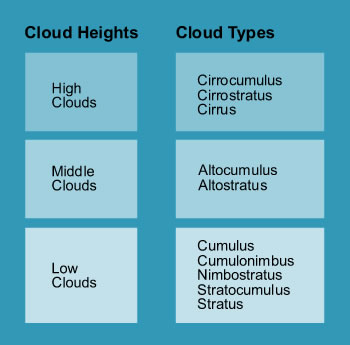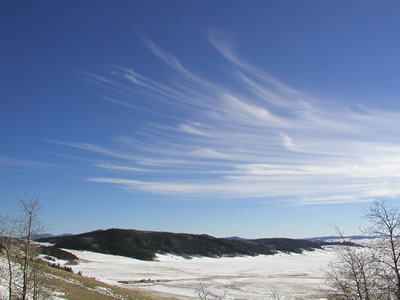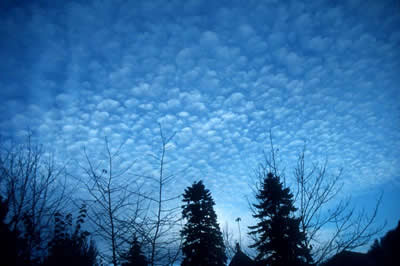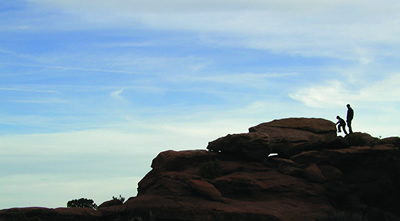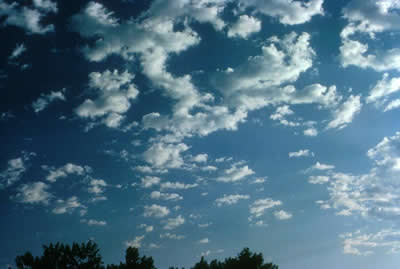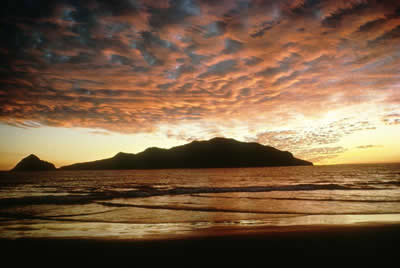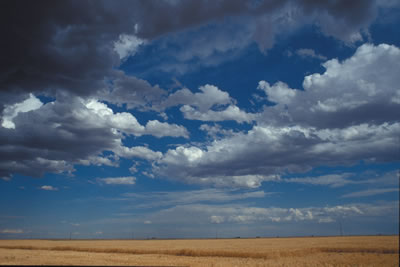Click on image for full size
Courtesy of Becca Hatheway/UCAR
Clouds are Found at Different Heights
The different types of clouds we see in the sky are located at different heights in the sky.
High clouds include cirrus, cirrocumulus, and cirrostratus clouds. These clouds are made up of either ice or water droplets, but they are usually made up of ice crystals. Water clouds tend to have sharp edges, and ice clouds are more wispy.
Middle clouds include altocumulus and altostratus clouds. These are usually water clouds, except when it is cold enough at that altitude in the atmosphere for ice crystals to form.
Low clouds include stratocumulus, cumulus, stratus, cumulonimbus, and nimbostratus clouds. These clouds are generally made of water droplets. Cumulus and cumulonimbus clouds can be very tall, with their tops as high as middle or high level clouds, but their bases are as low as the other low clouds.
For tips on how to tell how high a cloud is in the sky, look for clues on each cloud type page. Also, the same type of cloud will be at a different height in the sky at different latitudes on Earth. Check out the cloud heights by latitude page.
The clouds listed in the figure on this page are found in the troposphere, which is the lowest layer in the atmosphere and is where weather occurs. Polar stratospheric clouds are located in a layer of the atmosphere called the stratosphere. Polar mesospheric, or noctilucent, clouds are the highest clouds and are located in the atmospheric layer called the mesosphere. This diagram shows the different layers of the atmosphere.


